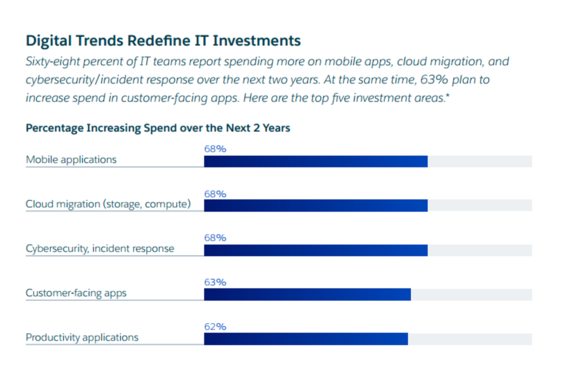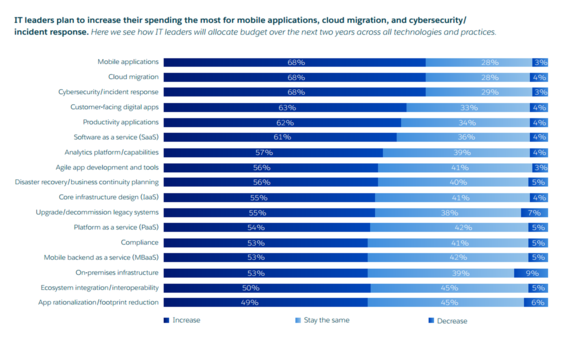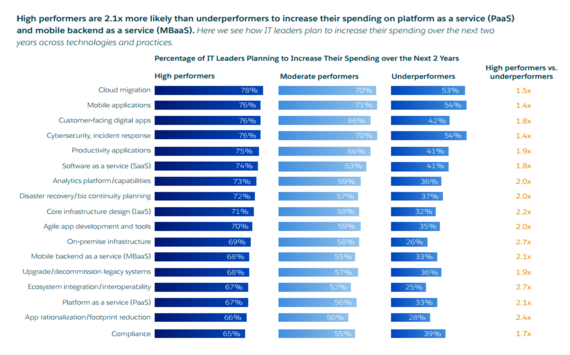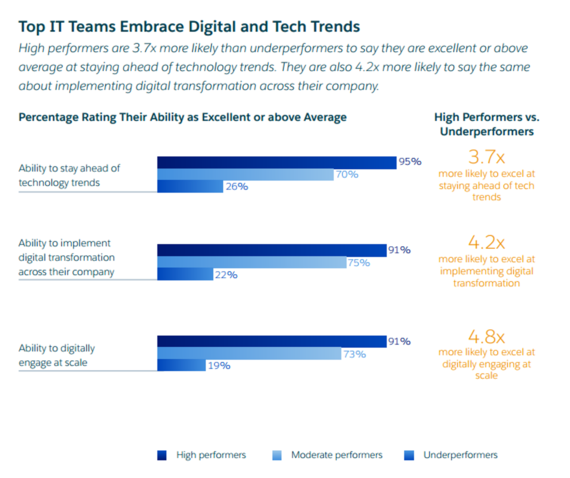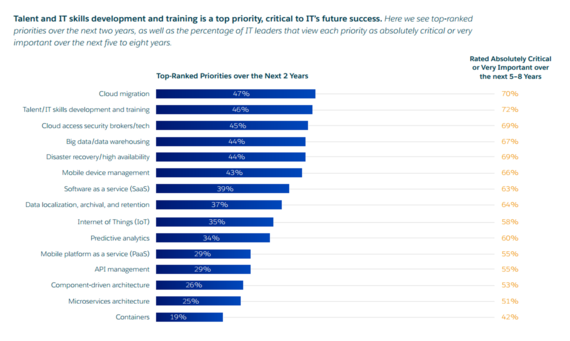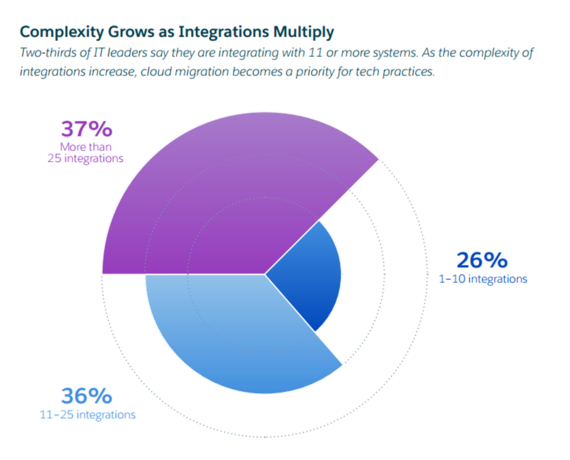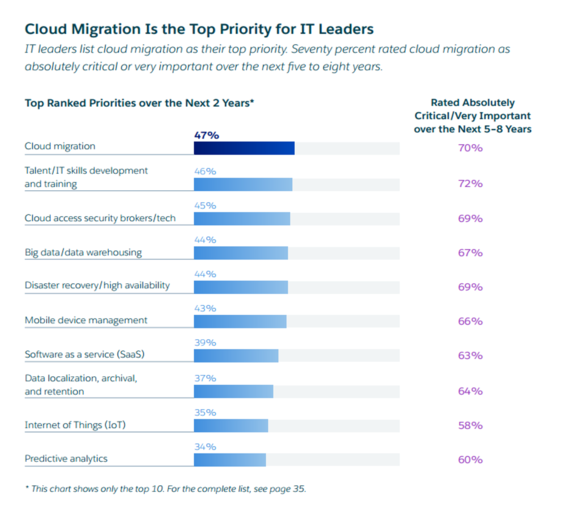Gartner recently advised CIOs to consider 10 New Year's resolutions for 2016 including improving relationships with CMO and board members, exploiting crowdsourcing and shifting IT thinking from "how, and what skills" to "why, and which competencies". There is no doubt that in the connected economy, where customers - both internal and external - are more mobile, social, data-driven and smarter, businesses must heavily rely on CIOs and IT leaders to meet the growing expectations of their products and services.
I have the good fortune to collaborate with CIOs on a weekly basis. The very best CIOs are aggressively championing digital business transformation projects. In fact, more CEOs are involved in better understanding technology investments and actively playing a role in developing a deeper understanding of how they can leverage technology to improve business outcomes. Every business leader wants to know more about their customers. There is no better time than now to be a CIO.
What do CIOs and information technology (IT) leaders need to know about digital business transformation trends and priorities for 2016? To learn about the state of IT in 2016, Salesforce surveyed more than 2,200 global IT leaders and CIOs to discover:
- The evolving role of IT in business today
- How high-performing IT organizations are mastering digital transformation
- Areas where IT teams are investing to lead innovation in 2016 and beyond
In this research, high performance teams are defined as those whose IT leaders rate their company's business performance as excellent or above average and rate their company as excellent compared to its competitors. You can learn more about the research methodology here.
According to the research, there are three key findings:
1. Strategy Under Siege: Digital Shakes Up Traditional IT
Successful IT teams must now be proactive, aligned with customer needs, and on top of digital trends like mobile. This shift is most visible in the rise of the chief digital officer, a position that has emerged to address the need for a digitally driven, innovative, and customer-focused leadership role in IT.
Sixty percent of companies currently employ a chief digital officer.
2. The Skills Gap Widens: IT Leaders Bank on Training and Tools
As customer and employee expectations change, so do the necessary skills and talents needed to exceed them. There is a widening skills gap between demand and talent, compounded by changing budget needs.
Four out of the top 10 pain points that IT leaders face are related to the skills gap.
3. Technology Shifts: The Cloud and Emerging Tech Lead the Way
Training and tools are a part of the approach to closing the skills gap -- the other part is the technology itself. IT leaders are leveraging new tech solutions to manage the backend while freeing up their teams to focus on innovation and delivering business results.
IT leaders across all performance levels list cloud migration as their top priority.
I analyzed the research summary and here 20 important takeaways:
1. 79% of IT teams are currently developing apps for customers, partners and employees
2. IT Focus areas: 1. Worker productivity (55%), data visibility (47%), business process automation (42%)
3. 68% of IT teams report spending more on mobile apps, cloud migration, and cybersecurity/incident response over the next two years.
4. Three-quarters of IT leaders plan to increase overall IT spend.
5. Top three IT areas of investment: 1. Mobile apps (68%), cloud migration (68%), security response (68%), 2. Customer facing apps (63%), 3. Productivity apps (62%)
6. High performers are 2.1x more likely than underperformers to increase their spending on platform as a service (PaaS) and mobile backend as a service (MBaaS).
7. High performers are 4.2x more likely to say they're excellent at implementing digital transformation across their company.
8. 60% of companies surveyed already employ a chief digital officer -- a leadership role that was scarcely heard of a decade ago.
CIOs now need to be visionaries for not just their departments, but the company as a whole. A recent role, the chief digital officer (CDO), has become a must-have in many organizations. CDOs usually have a marketing background, consumer knowledge, and a hyperfocus on digital trends. The role has become more prominent as employees and customers alike expect consumer-friendly tech. - Salesforce Research 2016
9. Four out of the top 10 pain points that IT leaders face are related to the skills gap.
Almost three-quarters of IT leaders say talent/IT skills development and training will be absolutely critical or very important for their team in the next five to eight years. However, four out of the top 10 obstacles cited revolve around the growing skills gap. - Salesforce Research 2016
10. More than half of IT leaders are experiencing a skills gap in data engineering, IT security, and application development.
11. 19% of underperforming IT teams say they aren't currently addressing the IT skills gap at all.
12. 96% of high performing IT teams invest in training for technical staff.
13. 66% of high performers strongly agree they feel valued by their leadership, while only 15% of underperformers feel the same.
Embracing new technologies is an equally important aspect of accelerating innovation. The strengthening of the cloud and emergence of rapid app development platforms, for example, are enabling successful IT teams to free up talent for business transformation. - Salesforce Research 2016
14. 72% of high-performing companies can develop an app in three months or less, while only 46% of underperformers can do the same.
15. 80% of those developing in the cloud say they are working primarily on projects that will transform their business.
16. Nearly one-third of IT leaders say their tech practice supports between 11 and 50 apps. Beyond that, two-thirds of teams are integrating with 11 or more systems.
17. 70% rated cloud migration as absolutely critical or very important over the next five to eight years.
Nearly two-thirds of companies that operate in the cloud rate their ability to digitally scale as above average. Cloud services allow companies to off-load data management, operating system development, and even design, so they can produce higher quality apps as fast as consumers expect them. - Salesforce Research 2016
18. 73% of cloud-enabled companies say their executive team is leading the business in a digital transformation.
19. 72% of high performing IT teams trust storing core infrastructure data on a public cloud, which is 1.9x more than underperformers.
20.Microservices (96%), component-driven framework (93%), and future-proof backwardcompatible dev methodology (91%) are the top three areas of IT growth across architectural and development strategy.
The research based on 2,200 IT leaders and CIOs concludes with a summary of how IT teams today can start shifting in order to succeed tomorrow.
- Rethink traditional organizations
- Think customer and mobile first
- Invest in training and development
- Migrate to the cloud
- Embrace emerging technology
There is no better time than now for CIOs and IT leaders to lead digital business transformation initiatives at their companies. Growth, profitability, customer experience, compliance and operational excellence are key business drivers that require strong IT leadership. Every business is a technology business, which means every CEO must recruit and retain and reward the very best IT talent. Business relevance and growth in the digital era will strongly depend on a company's IT leadership and capabilities.


